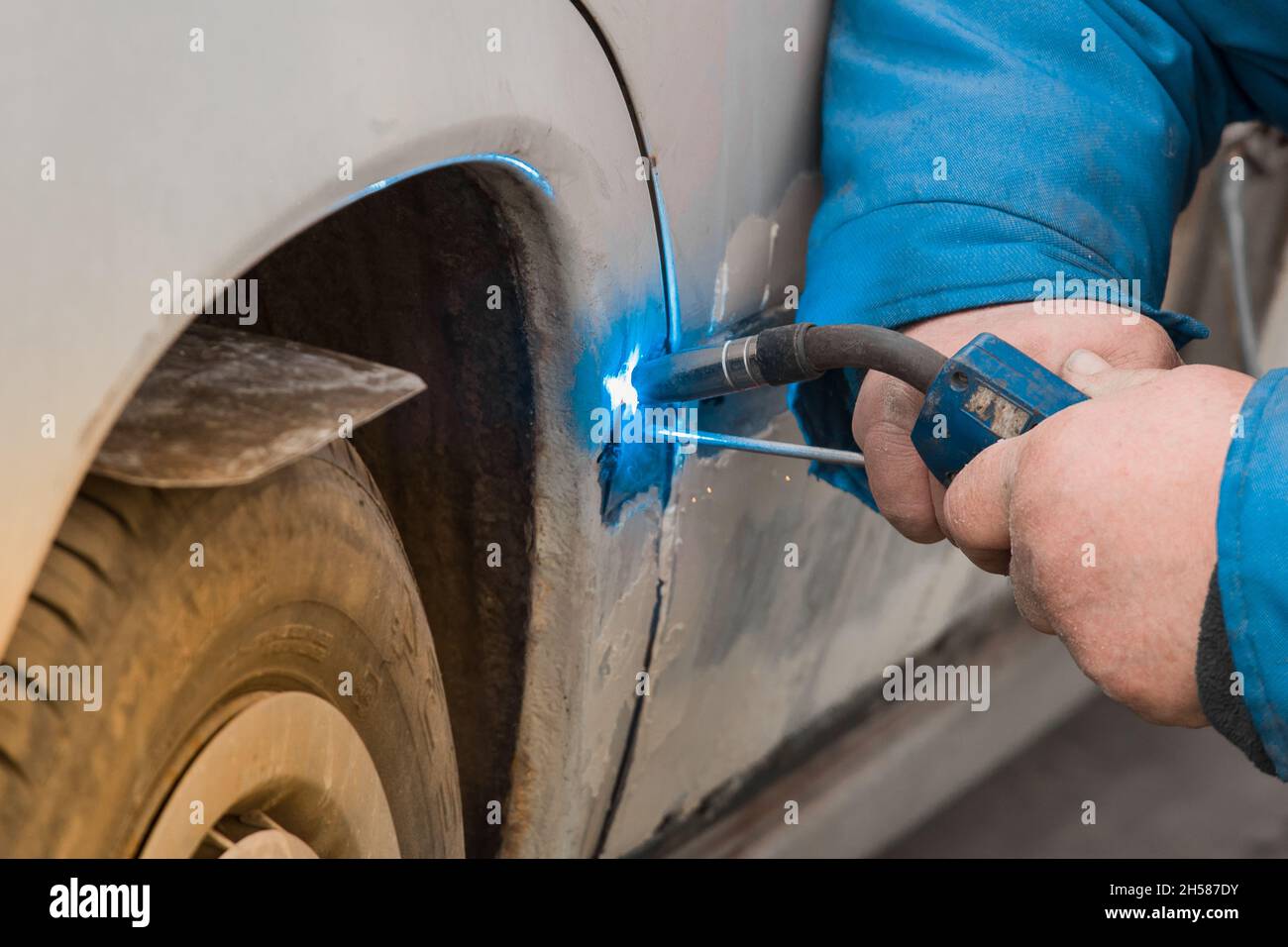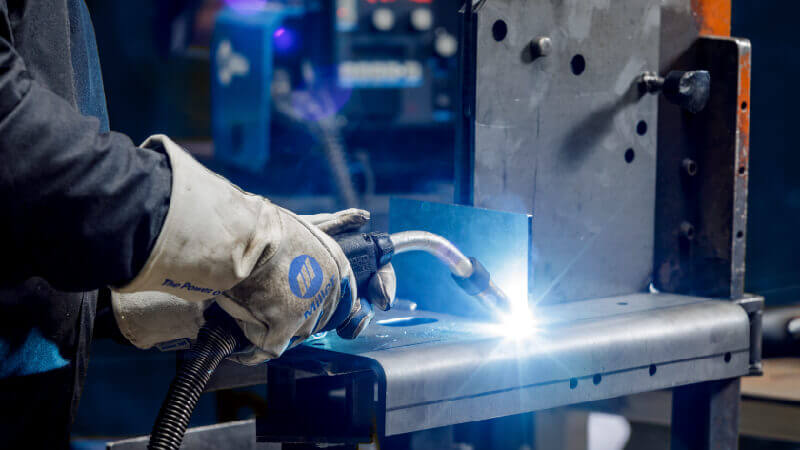Common Welding Repair Service Issues and Exactly How to Address Them Properly
Welding repair work typically run into an array of concerns that can endanger the honesty of the end product. Typical issues include insufficient penetration, porosity, and imbalance, to name a few. Each problem provides special obstacles that call for certain strategies for resolution. Understanding these issues is necessary for welders aiming to improve their skills and results. This discussion will check out these usual welding repair work problems and efficient methods to resolve them.
Inadequate Penetration
Inadequate infiltration occurs when the weld steel fails to fully fuse with the base material, causing weak joints and prospective structural failings. This problem usually stems from not enough warmth input, inaccurate electrode angle, or improper welding rate. Welders might experience insufficient penetration as a result of a miscalculation of the necessary criteria for a certain material thickness or type. In addition, contamination on the base material's surface can impede effective bonding, aggravating the trouble. To attend to poor infiltration, welders need to assure appropriate setups on their equipment and maintain a clean job surface area. Normal examination of welds is advised to identify any type of shortages early, permitting prompt adjustments and the avoidance of jeopardized structural integrity in bonded assemblies.
Porosity
Porosity is an usual flaw in bonded joints that materializes as little gas bubbles trapped within the weld steel. This defect can endanger the honesty of the weld, bring about reduced stamina and possible failure under tension. Montana Mobile Welding and Repair Welding. Porosity typically arises from contamination, wetness, or improper welding techniques, which enable gases to get away into the molten weld swimming pool. To attend to porosity, welders ought to guarantee correct surface area prep work, keep a clean working environment, and make use of ideal welding specifications. In addition, selecting the appropriate filler material and shielding gas can minimize gas entrapment. Normal inspection and testing of welds can aid identify porosity early, guaranteeing prompt rehabilitative actions are taken, thus preserving the top quality and reliability of the welded framework
Imbalance
Imbalance in welding can emerge from numerous aspects, including improper configuration and thermal expansion. Comprehending the source is essential for effective resolution. Numerous improvement methods are offered to straighten elements and ensure architectural honesty.
Root causes of Imbalance
Welding misalignment typically stems from a variety of underlying issues that can endanger architectural integrity. One primary cause is improper fit-up of components before welding, which can cause gaps and uneven surfaces. Variants in thermal development throughout the welding process can likewise lead to distortion, particularly if the materials being joined have various coefficients of development. In addition, insufficient clamping and fixturing may fall short to hold components firmly in location, resulting in activity during welding. Poorly conserved equipment, including welding devices and devices, may present inconsistencies in the weld bead, additional adding to imbalance. Ultimately, operator error, originating from not enough training or experience, can likewise play a considerable function in creating misaligned welds.
Adjustment Methods Available
Dealing with imbalance successfully calls for a combination of rehabilitative techniques tailored to the specific concerns handy. One usual approach is using jigs or fixtures to hold components in the right setting during welding, making certain consistent alignment. In addition, pre-heating the materials can assist minimize distortion and boost fit-up. For considerable imbalance, mechanical realignment techniques, such as utilizing hydraulic jacks or clamps, can be used to remedy the position before welding. Post-weld warmth therapy may also be needed to alleviate anxieties created by imbalance. Mindful inspection and adjustment throughout the configuration phase can avoid misalignment issues from ending up being considerable issues, promoting a smoother welding process and boosting overall structural honesty.
Distortion
Distortion is a common difficulty in welding that can develop from numerous aspects, including irregular heating & cooling. Recognizing the root causes of distortion is necessary for applying reliable avoidance strategies. Addressing this issue not just improves structural integrity but also boosts the general high quality of the weld.
Reasons for Distortion
When based on the extreme warmth of welding, products commonly go through changes that can lead to distortion. This sensation largely emerges from thermal growth and tightening during the welding process. As the weld location warms up, the material broadens; upon air conditioning, it contracts, which can create inner anxieties. Furthermore, unequal home heating across a workpiece can aggravate these stress and anxieties, causing warping or bending. The type of material likewise plays a substantial function; metals with varying thermal conductivity and coefficients of growth might react in a different way, resulting in unpredictable distortions. Bad joint layout and inadequate fixturing can contribute to misalignment throughout welding, raising the probability of distortion. Comprehending these reasons is crucial for reliable welding repair work and avoidance strategies.
Prevention Techniques
Reliable avoidance strategies for visit site distortion during welding concentrate on regulating warmth input and ensuring proper joint design. Maintaining a constant warm input helps to minimize thermal development and tightening, which can lead to distortion. Making use of techniques such as pre-heating the workpiece can also decrease the temperature gradient, promoting consistent heating. In addition, choosing ideal joint designs, such as T-joints or lap joints, can enhance stability and lower tension concentrations. Carrying out correct fixturing to secure the workpieces in place better help in maintaining positioning throughout the welding process. Ultimately, staggered welding series can distribute warm more equally, preventing local distortion. By applying these strategies, welders can considerably lower the chance of distortion and enhance the overall high quality of their welds.
Cracking
Splitting is an usual problem come across in welding fixings, often resulting from various factors such as inappropriate air conditioning rates, material option, or poor joint prep work. The occurrence of fractures can greatly endanger the honesty of the weld, bring about possible failures throughout operation. To resolve this issue, welders have to initially examine the origin, guaranteeing that materials are compatible and appropriately selected for the certain application. In addition, regulating the air conditioning price during the welding procedure is necessary; quick cooling can induce stress and bring about fracturing. Proper joint style and prep work likewise add to minimizing the danger. Executing these methods can boost weld high quality and durability, inevitably reducing the likelihood of fracturing in completed weldments.

Incomplete Blend
A considerable concern in welding repair work is insufficient combination, which occurs when the weld metal does not sufficiently bond with the base product or previous weld passes - Fabrication. This flaw can result in weak points in the joint, possibly compromising the stability of the bonded structure. Aspects contributing to incomplete combination consist of inadequate warm input, inappropriate welding strategy, and contamination of the surface areas being signed up with. To resolve this issue efficiently, welders should guarantee correct pre-weld cleansing and surface prep work, along with readjust their welding specifications to achieve sufficient infiltration and combination. Regular assessment during the welding process can likewise aid recognize insufficient blend early, enabling prompt restorative measures to boost the total top quality of the weld
Overheating
While welding repairs can enhance structural honesty, overheating offers a substantial obstacle that can this lead to material degradation. Excessive heat throughout welding can modify the mechanical properties of metals, leading to lowered stamina, increased brittleness, and warping. This sensation is especially important in high-stress applications where structural reliability is vital. Identifying getting too hot can include aesthetic evaluations for discoloration or distortion, in addition to monitoring temperature during the welding procedure. To minimize the risks related to overheating, welders should use ideal strategies, such as regulating warmth input, adjusting traveling rate, and making use of appropriate filler materials. Additionally, carrying out pre- and post-weld heat treatments can assist restore product buildings and enhance the total high quality of the repair, guaranteeing lasting efficiency and security.
Regularly Asked Questions
What Are the Typical Signs of a Welding Defect?

How Can I Examine My Welds for Top quality?
To check welds for quality, one can use visual examinations, ultrasonic screening, and radiographic approaches. Each technique ensures architectural honesty, identifies flaws, and validates adherence to defined requirements, eventually boosting the dependability of the welded joints.
What Security Safety Measures Should I Take While Welding?
When welding, one need to focus on security by wearing proper personal safety tools, making sure correct air flow, securing flammable products away, maintaining a clean workspace, and understanding surroundings to stop injuries and accidents.
Can I Fix a Weld Without Remodeling the Entire Joint?
Repairing a weld without renovating the whole joint is feasible, depending upon the damages (Belgrade). Strategies such as grinding, including filler material, or making use of a welding procedure can properly attend to certain imperfections while maintaining the bordering framework
What Tools Are Vital for Efficient Welding Services?
Essential devices for effective welding repairs include a welding device, cord brush, mill, safety gear, clamps, and filler products. Each tool plays a vital role in making sure high quality and safety during the repair Continued work process. Porosity generally develops from contamination, dampness, or incorrect welding strategies, which permit gases to leave right into the molten weld pool. Improperly conserved equipment, consisting of welding machines and devices, may introduce inconsistencies in the weld bead, additional adding to imbalance. When subjected to the extreme heat of welding, materials commonly undergo modifications that can lead to distortion. Cracking is an usual concern encountered in welding fixings, frequently resulting from different variables such as improper cooling rates, product selection, or inadequate joint prep work. A considerable problem in welding fixings is incomplete combination, which occurs when the weld metal does not appropriately bond with the base product or previous weld passes.